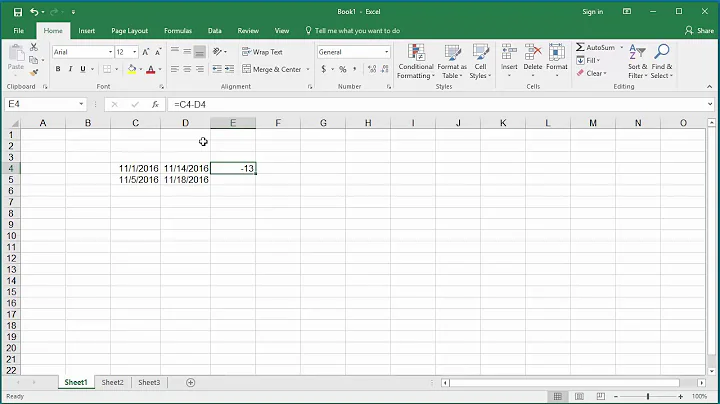generate days from date range
Solution 1
This solution uses no loops, procedures, or temp tables. The subquery generates dates for the last 10,000 days, and could be extended to go as far back or forward as you wish.
select a.Date
from (
select curdate() - INTERVAL (a.a + (10 * b.a) + (100 * c.a) + (1000 * d.a) ) DAY as Date
from (select 0 as a union all select 1 union all select 2 union all select 3 union all select 4 union all select 5 union all select 6 union all select 7 union all select 8 union all select 9) as a
cross join (select 0 as a union all select 1 union all select 2 union all select 3 union all select 4 union all select 5 union all select 6 union all select 7 union all select 8 union all select 9) as b
cross join (select 0 as a union all select 1 union all select 2 union all select 3 union all select 4 union all select 5 union all select 6 union all select 7 union all select 8 union all select 9) as c
cross join (select 0 as a union all select 1 union all select 2 union all select 3 union all select 4 union all select 5 union all select 6 union all select 7 union all select 8 union all select 9) as d
) a
where a.Date between '2010-01-20' and '2010-01-24'
Output:
Date
----------
2010-01-24
2010-01-23
2010-01-22
2010-01-21
2010-01-20
Notes on Performance
Testing it out here, the performance is surprisingly good: the above query takes 0.0009 sec.
If we extend the subquery to generate approx. 100,000 numbers (and thus about 274 years worth of dates), it runs in 0.0458 sec.
Incidentally, this is a very portable technique that works with most databases with minor adjustments.
SQL Fiddle example returning 1,000 days
Solution 2
Here is another variation using views:
CREATE VIEW digits AS
SELECT 0 AS digit UNION ALL
SELECT 1 UNION ALL
SELECT 2 UNION ALL
SELECT 3 UNION ALL
SELECT 4 UNION ALL
SELECT 5 UNION ALL
SELECT 6 UNION ALL
SELECT 7 UNION ALL
SELECT 8 UNION ALL
SELECT 9;
CREATE VIEW numbers AS
SELECT
ones.digit + tens.digit * 10 + hundreds.digit * 100 + thousands.digit * 1000 AS number
FROM
digits as ones,
digits as tens,
digits as hundreds,
digits as thousands;
CREATE VIEW dates AS
SELECT
SUBDATE(CURRENT_DATE(), number) AS date
FROM
numbers;
And then you can simply do (see how elegant it is?):
SELECT
date
FROM
dates
WHERE
date BETWEEN '2010-01-20' AND '2010-01-24'
ORDER BY
date
Update
It is worth noting that you will only be able to generate past dates starting from the current date. If you want to generate any kind of dates range (past, future, and in between), you will have to use this view instead:
CREATE VIEW dates AS
SELECT
SUBDATE(CURRENT_DATE(), number) AS date
FROM
numbers
UNION ALL
SELECT
ADDDATE(CURRENT_DATE(), number + 1) AS date
FROM
numbers;
Solution 3
Accepted answer didn't work for PostgreSQL (syntax error at or near "a").
The way you do this in PostgreSQL is by using generate_series function, i.e.:
SELECT day::date
FROM generate_series('2010-01-20', '2010-01-24', INTERVAL '1 day') day;
day
------------
2010-01-20
2010-01-21
2010-01-22
2010-01-23
2010-01-24
(5 rows)
Solution 4
Using a recursive Common Table Expression (CTE), you can generate a list of dates, then select from it. Obviously you normally wouldn't want to create three million dates, so this just illustrates the possibilities. You could simply limit the date range inside the CTE and omit the where clause from the select statement using the CTE.
with [dates] as (
select convert(datetime, '1753-01-01') as [date] --start
union all
select dateadd(day, 1, [date])
from [dates]
where [date] < '9999-12-31' --end
)
select [date]
from [dates]
where [date] between '2013-01-01' and '2013-12-31'
option (maxrecursion 0)
On Microsoft SQL Server 2005, generating the CTE list of all possible dates took 1:08. Generating one hundred years took less than a second.
Solution 5
MSSQL Query
select datetable.Date
from (
select DATEADD(day,-(a.a + (10 * b.a) + (100 * c.a)),getdate()) AS Date
from (select 0 as a union all select 1 union all select 2 union all select 3 union all select 4
union all select 5 union all select 6 union all select 7 union all select 8 union all select 9) as a
cross join (select 0 as a union all select 1 union all select 2 union all select 3 union all select 4
union all select 5 union all select 6 union all select 7 union all select 8 union all select 9) as b
cross join (select 0 as a union all select 1 union all select 2 union all select 3 union all select 4
union all select 5 union all select 6 union all select 7 union all select 8 union all select 9) as c
) datetable
where datetable.Date between '2014-01-20' and '2014-01-24'
order by datetable.Date DESC
Output
Date
-----
2014-01-23 12:35:25.250
2014-01-22 12:35:25.250
2014-01-21 12:35:25.250
2014-01-20 12:35:25.250
Related videos on Youtube
Pentium10
Backend engineer, team leader, Google Developer Expert in Cloud, scalability, APIs, BigQuery, mentor, consultant. To contact: message me under my username at gm ail https://kodokmarton.com
Updated on March 25, 2022Comments
-
 Pentium10 about 2 years
Pentium10 about 2 yearsI would like to run a query like
select ... as days where `date` is between '2010-01-20' and '2010-01-24'And return data like:
days ---------- 2010-01-20 2010-01-21 2010-01-22 2010-01-23 2010-01-24
-
 Pentium10 over 14 yearsThere is no other problem attached to this question. The above question is the problem, mastering SQL courses.
Pentium10 over 14 yearsThere is no other problem attached to this question. The above question is the problem, mastering SQL courses. -
Derek Adair over 14 yearsDo you just need an array of dates based on a selected date-range?
-
 Pentium10 over 14 yearsI am thinking of a usage, to find you a problem... If you get a task to fill in some missing records in your table. And you have to run a query for each day I am thinking something like
Pentium10 over 14 yearsI am thinking of a usage, to find you a problem... If you get a task to fill in some missing records in your table. And you have to run a query for each day I am thinking something likeinsert into table select ... as days date between '' and '' -
Nanne almost 11 yearsAn example for its use would be to generate statistics, and include a row for dates you have no data on. If you are doing some sort of group-by it can be much quicker to actually generate all the information in SQL and add it into whatever format you need, instead of dumping your data as-is to your language, and start looping and adding your empties.
-
Josh Diehl about 8 years@Nanne that is precisely why I saved this question. I need the above to LEFT JOIN into data which may not exist for certain dates.
-
outis about 2 yearsCovered by "Get a list of dates between two dates" (though this question is narrower in focus; specifically, the other is RDBMS-agnostic).
-
-
OMG Ponies over 14 yearsYou'll see better performance if you change
UNIONtoUNION ALL- it's wasting time checking for duplicates to remove that don't exist. It's overcomplicated IMO though - if you're going to construct a resultset using UNIONs, why not just specify the date and be done with it? -
D'Arcy Rittich over 14 yearswhy not just specify the date and be done with it - because the above method allows you to create arbitrarily large sets of numbers (and dates) requiring no table creation, that would be painful to hard-code in the manner you are suggesting. Obviously for 5 dates it is overkill; but even then, if you are joining against a table where you do not know the dates in advance, but just the potential min and max values, it makes sense.
-
OMG Ponies over 14 yearsIt's "painful" to just use the DATETIME function in place of the UNION statement you've already created? It alleviates any need for the logic you had to add. Hence - you've overcomplicated the query. The UNION statement, either way, is not scalable - specifying a date or number, who wants to update it to accommodate say 20 or 30 dates?
-
OMG Ponies over 14 yearsThe
DUALtable is supported by Oracle and MySQL to use as a stand-in table in theFROMclause. It doesn't exist, selecting values from it will return whatever the value is. The idea was to have the stand-in because a SELECT query requires aFROMclause specifying at least one table. -
 Pentium10 over 14 yearsThanks, can you please edit and update to use
Pentium10 over 14 yearsThanks, can you please edit and update to useUNION ALL, then I will flag as answer. -
 Pentium10 over 14 yearswhy have you posted this, since the above reply does not need a table and provides the solution?
Pentium10 over 14 yearswhy have you posted this, since the above reply does not need a table and provides the solution? -
joe almost 12 yearsIt's really nice to see an answer to the question, not endless comments how it cannot, or should not, be done. Most things can be done, and "should" is only meaningful in context, which differs for everyone. This answer helped me, even though I am well aware there are better ways in most situations.
-
spencer7593 almost 12 years+1 This is the approach I use to generate a list of dates, or more often, a list of datetime values on a specified interval (e.g. 15 minutes). This same approach works in SQL Server as well. In Oracle, we can use (the more terse) SELECT LEVEL FROM DUAL CONNECT BY LEVEL <= 1000 to get a list of integer values.
-
 xjshiya about 11 years@RedFilter, this is awesome. However, when I changed the dates to
xjshiya about 11 years@RedFilter, this is awesome. However, when I changed the dates to2013-3-1and2013-3-13, The output ranges only from2013-3-1up to2013-3-5. I'm experiencing the same problem right now so I need help. stackoverflow.com/questions/15223032/… thanks. -
D'Arcy Rittich about 11 years@xjshiya The query as written goes back from the current date (
curdate()). Changecurdate()to'2014-01-01'and it will go back from that date instead. -
Artur about 11 yearsThis is why I hate SQL - it is so ugly
-
corg over 10 yearsNeeded the following tweak for PostgreSQL: the "INTERVAL (a.a+...*c.a) DAY" part should be "(a.a+...*c.a) * INTERVAL '1' DAY" - Anyways, very helpful answer, works with heroku dataclips, thx!
-
vasanth over 10 yearsThis doesn't work in all the cases. SELECT date FROM dates WHERE date BETWEEN '2014-12-01' AND '2014-12-28' ORDER BY date
-
Stéphane over 10 yearsGood call @user927258. This is because the first view
datesmentioned above computes the dates starting from the current date, which is why you won't be able to retrieve dates set in the future. Answer from @RedFilter suffers from the same design flaw. I have added a workaround in my answer though. -
 Erran Morad over 10 years@RedFilter - I get 0 rows when I execute your query.
Erran Morad over 10 years@RedFilter - I get 0 rows when I execute your query. -
D'Arcy Rittich over 10 years@BoratSagdiyev You are saying the SQL Fiddle example returns zero rows for you? Works fine for me.
-
 Erran Morad over 10 years@RedFilter - I try to run it on my machine in MySQL, it fail.
Erran Morad over 10 years@RedFilter - I try to run it on my machine in MySQL, it fail. -
D'Arcy Rittich over 10 years@BoratSagdiyev Since my MySQL demo works, sounds like you need to ask a new question on SO.
-
gadelat about 10 yearsHow do I use this in trigger?
-
D'Arcy Rittich about 10 years@gadelat The same way you would use any other SQL in a trigger :)
-
 swapab over 9 yearsHow would you join this query across a table? Basically am trying to count the number of entries grouped by date.
swapab over 9 yearsHow would you join this query across a table? Basically am trying to count the number of entries grouped by date. -
D'Arcy Rittich over 9 years@swap.nil Use the date query as a sub-query (derived table) and join it against your table and then apply the group by.
-
 swapab over 9 years@RedFilter Thank you for suggestion. Would be amazing if you have some eyes on trials I did here
swapab over 9 years@RedFilter Thank you for suggestion. Would be amazing if you have some eyes on trials I did here -
Brian over 9 yearsThis generates historical dates leading up to CURDATE(). To generate dates into the future starting from CURDATE(), change to SELECT CURDATE() + INTERVAL().
-
 Noel Baron over 9 yearsThose of you who cannot get this query to work: Please slap yourself in the face and then re-read the OP's comment about this query generating 1000 dates. Since 2010 was more than 1000 days ago, you'll need to adjust the query accordingly.
Noel Baron over 9 yearsThose of you who cannot get this query to work: Please slap yourself in the face and then re-read the OP's comment about this query generating 1000 dates. Since 2010 was more than 1000 days ago, you'll need to adjust the query accordingly. -
 Vignesh about 9 yearsOne of the best queries I have ever seen, I need to become a mysql master like you.
Vignesh about 9 yearsOne of the best queries I have ever seen, I need to become a mysql master like you. -
Bacon Bits about 9 years+1 for actually creating a permanent numbers table instead of making the RDBMS build it with every time you need the query. Auxiliary tables aren't evil, people!
-
 AdamMc331 about 9 yearsThis is incredible, and it runs well? I regret that I can only give one upvote.
AdamMc331 about 9 yearsThis is incredible, and it runs well? I regret that I can only give one upvote. -
madz over 8 yearsIn the case of range, is not that better to put bigger date instead of current date? In the given example I mean '2010-01-24' instead of curdate() then just check > '2010-01-20' instead of between?
-
 Ricardo C about 8 yearsIf I had only scrolled down a bit more... sigh. Anyways, thank you. I added a CAST( <expression> AS DATE) to remove the time on my version. Also used where a.Date between GETDATE() - 365 AND GETDATE() ...if you run your query today it would give no rows if you dont notice the dates in the WHERE =P
Ricardo C about 8 yearsIf I had only scrolled down a bit more... sigh. Anyways, thank you. I added a CAST( <expression> AS DATE) to remove the time on my version. Also used where a.Date between GETDATE() - 365 AND GETDATE() ...if you run your query today it would give no rows if you dont notice the dates in the WHERE =P -
 Stewart over 7 yearsUsing some views definitely simplifies the queries, and makes it reusable. Although they are essentially doing the same thing, all those
Stewart over 7 yearsUsing some views definitely simplifies the queries, and makes it reusable. Although they are essentially doing the same thing, all thoseUNIONclauses look weird in a single SQL statement. -
Ferrybig over 7 yearsThis answer depends on the current year, from 2016, you cannot generate dates in 2010
-
 zed almost 7 yearsIf you want to generate dates in the future, use
zed almost 7 yearsIf you want to generate dates in the future, useselect curdate() + INTERVAL (a.a + (10 * b.a) + (100 * c.a)) DAY as Date. My eyes! -
 Wolfgang Fahl over 5 yearsI modified the answer to go back as much as 10.000 days so it will work in 2018 for the given example. It's a bit slower this way.
Wolfgang Fahl over 5 yearsI modified the answer to go back as much as 10.000 days so it will work in 2018 for the given example. It's a bit slower this way. -
 mpapec about 3 yearsCurious whether union elimination in
mpapec about 3 yearsCurious whether union elimination indatesview would result in some performance gains.










